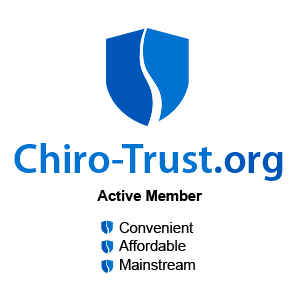Carpal Tunnel Syndrome (CTS) is a very common complaint often associated with repetitive motion-related jobs. There are nine tendons traveling down the arm from the elbow that “merge” or come together in the relatively tight carpal tunnel, kind of like when four lanes of traffic suddenly narrow into one lane. We all know what happens when there is road construction during rush hour – traffic comes to a screeching halt and you have to sit there and wait, and wait, then move an inch or two, painfully waiting to reach the end of the construction zone. However, when its not rush hour, traffic may not slow down much at all because there simply aren’t many cars on the road. This analogy is VERY similar to CTS as the nine tendons and median nerve are the lanes of traffic that merge together as they travel through the tight carpal tunnel in the wrist. When a worker, let’s say a typist, works long hours at the computer typing as fast as possible (like heavy traffic during rush hour), the repetitive rubbing of the tendons in the tunnel creates friction, heat, swelling, and eventually pinching of the nerve resulting in the classic numb thumb and first four fingers. They have to stop shake their hands and flick their fingers to get the them to “wake up” before they can resume typing again, only to have to stop and go and shake/flick the hands/fingers several more times as they attempt to complete their task. Additionally, they may take a break and rest or compensate by shifting their body into different positions in attempt to reduce the strain on the wrist tendons.
Some of the ways we shift in attempt to reduce strain include raising the elbows away from the sides of the body, shrugging the shoulders up towards the ears, moving the head and neck into different positions like poking the chin out, slouching, plus combinations of all or some of these. Over time, these compensatory faulty postures end up straining the other surrounding joints and when this occurs, the collection of all painful areas is referred to as “cumulative trauma disorders” (CTDs). As you can see, it’s important to treat or manage the CTS condition early-on so you can avoid the progression of other CTDs or else, treatment will also have to address many other conditions such as (partial list): tennis and/or golfer elbow (tendonitis), shoulder tendonitis, neck or cervical strain, and/or radiating neck to arm pain (cervical disc injury with radiation of pain into the arm). CTDs can also be a contributing cause to mid and low back pain. The longer these conditions go untreated, the longer it will take to stop their progression and sometimes, many of these conditions can become permanent.
There are a lot of ways we can avoid the cascade of events that lead to CTS and other CTDs, some of which include: 1. Early intervention (treatment) – chiropractic care works particularly well at this stage. 2. Taking “mini-breaks” during the work day such as a one-minute every 30-60 minutes to stretch the neck, shoulders, forearms, hands, and fingers. 3. Performing specific carpal tunnel / wrist stretches (placing the palm of the hand on a wall at shoulder level, keep the elbow straight, pointing the fingers down towards the floor). 4. Wearing a cock-up splint, especially at night (this prohibits extreme wrist bent positions and the numbness feeling that can wake us up at night). 5. Modifying a workstation, such as moving the computer monitor so the neck/head point straight ahead. Workstation modifications can also reduce awkward hand/wrist positions that overload the tendons of the wrists by lowering the mouse and/or keyboard if they are too high, or padding a sharp countertop edge to prevent it from digging into the forearm and further pinching the nerve.





